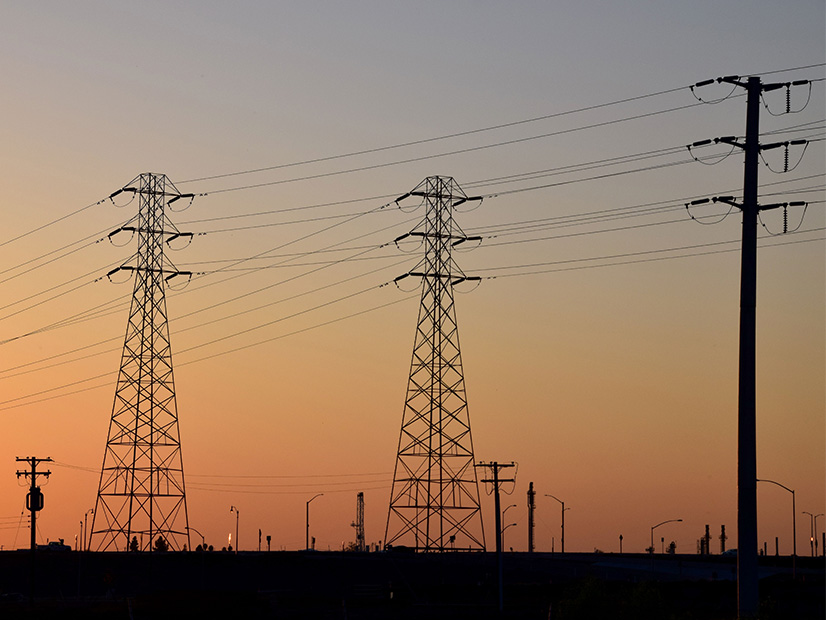FERC on Tuesday approved a set of CAISO tariff revisions intended to prevent the kind of supply shortages that triggered rolling blackouts in California last summer during an extended Western heat wave (ER21-1536).
The changes, the product of an expedited effort to head off shortages this summer, originate from the root cause analysis performed by CAISO, the California Public Utilities Commission and the California Energy Commission last fall to determine what contributed to the state’s first rolling blackouts since the Western energy crisis of 2000/01. (See CPUC, CAISO Take Major Steps for Summer Reliability.)
The joint report identified a number of causes, including the extreme weather, outmoded resource adequacy planning, transmission constraints and wholesale market design issues. (See CAISO Says Constrained Tx Contributed to Blackouts.)
Among the market changes approved by FERC on Tuesday was CAISO’s proposal to better incentivize incremental energy imports under tight system conditions by providing bid cost make-whole payments to resources with hourly block intertie schedules issued through the ISO’s hour-ahead scheduling process.
Under existing rules, CAISO’s hour-ahead scheduling process produces binding hourly block energy schedules for all imports and exports, but those schedules are settled at prices set in the ISO’s 15-minute market, a practice it established in order to reduce real-time energy imbalance offset charges. CAISO additionally adopted a rule making hourly block schedules ineligible for bid cost recovery in order to encourage economic bids at the interties, a practice it now says may disincentivize suppliers from offering incremental energy into the real-time market.
“CAISO explains that, during stressed grid conditions, the risk of receiving a payment less than bid price can increase, in part, because CAISO may take out-of-market actions before the 15-minute market that result in 15-minute prices clearing at amounts below an hour-ahead intertie block bid price,” FERC noted. “As a result, suppliers in the hour-ahead scheduling process may face a charge as opposed to a payment to deliver needed imports.”
To remedy the problem, CAISO crafted a rule that would guarantee suppliers at the interties receive at least their bid price under tight system conditions. The ISO’s Department of Market Monitoring supported the revision. Pacific Gas and Electric offered qualified support, asking the commission to require ongoing monitoring and an after-the-fact cost-benefit analysis of the use of the make-whole payment by CAISO and the DMM to prevent potential gaming of the market.
In approving the rule, FERC said it found CAISO “has provided adequate specification of the circumstances under which it may suspend these make whole payments.” It also rejected PG&E’s request for ongoing monitoring, saying the new rule is unlikely to create a significant volume of uplift payments because it will be applied for very limited periods, and noting that CAISO and the DMM already perform monitoring of market results.
Other tariff changes approved Tuesday include:
- the extension of CAISO’s hourly block and 15-minute bidding options to reliability demand response resources (RDRRs). The change will allow scheduling coordinators to specify whether an RDRR can be dispatched in the real-time market in hourly, 15- or five-minute intervals based on its operational and technical constraints. The ISO said its current rules don’t recognize the specific characteristics of RDRRs, which are often large load resources that can’t respond to five-minute dispatch orders. As the ISO learned during last summer’s heat wave, that can lead to price suppression in the five-minute market when the market process assumes those loads will be dropping off.
- use of net load uncertainty in the capacity test within the Western Energy Imbalance Market’s resource sufficiency evaluation (RSE) used to validate each EIM entity’s balancing authority area has sufficient capacity to meet its load and export obligations prior to a market interval. The net load uncertainty requirement “would account for the net load forecast error between the 15-minute and five-minute real-time market dispatch, adjusted for the EIM diversity benefit,” FERC noted. CAISO had noted that its own BAA had passed the RSE’s capacity test amid last summer’s emergencies, indicating a shortcoming with the test. Inclusion of net load uncertainty should help prevent a BAA leaning too heavily on the EIM to meet its net load needs.
- a requirement that an EIM entity use an automated market feature that updates its “mirror resource” schedule when the market awards an import at a CAISO intertie scheduling point sourced from the entity’s BAA. The ISO noted that entities currently have the option of either updating automatically or manually, but that the manual option increases the likelihood for error, especially under stressed conditions.
- pricing of all operating reserves at the applicable energy bid cap when those resources are dispatched during emergency conditions.
Interconnection Changes
The commission also approved two changes to CAISO’s generator interconnection process to make more capacity available this summer.
The first removes the cap on the ISO’s behind-the-meter expansion process, which currently allows interconnection customers to add generating capacity without increasing the interconnection service capacity originally studied at a site up to the lesser of 125% of the existing capacity or 100 MW.
The second will allow CAISO to temporarily award interim deliverability to independent study interconnection customers who reach commercial operation before the ISO conducts its next deliverability assessment to determine the capacity of projects in the queue.
Interconnection customers are currently required to participate in the market as “energy only” resources until CAISO is able to conduct its next cluster deliverability assessment. The ISO says customers typically must wait a year before that assessment, during which time they are excluded from providing resource adequacy capacity even if surplus transmission deliverability is available.
Under the new rule, any customer awarded interim deliverability will retain that status only until it either achieves full commercial operation or CAISO completes the next scheduled deliverability assessment and the customer completes delivery network upgrades.




